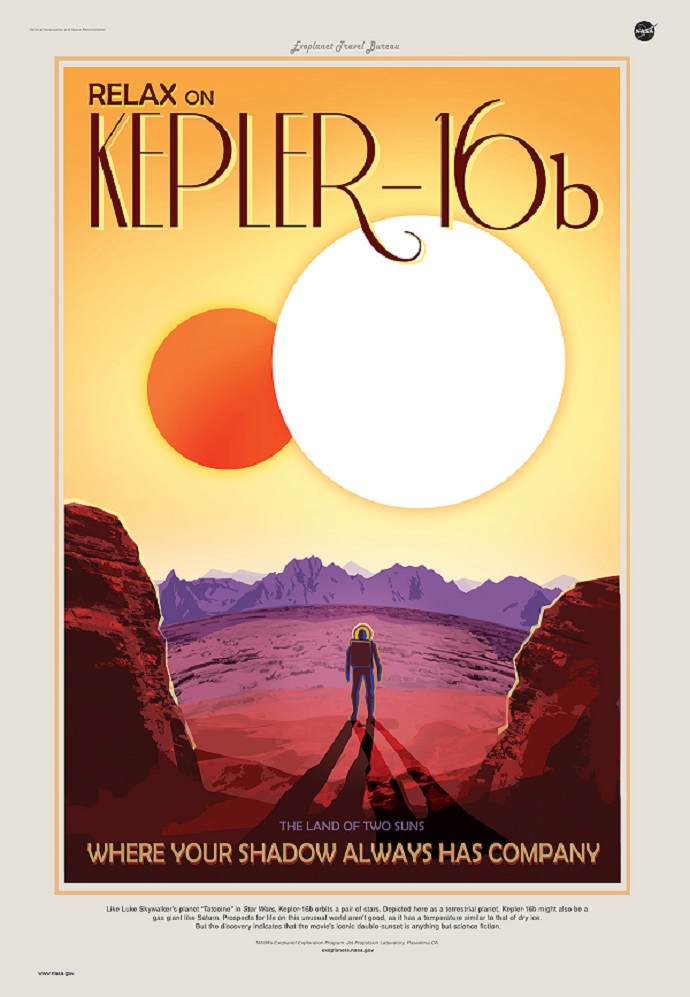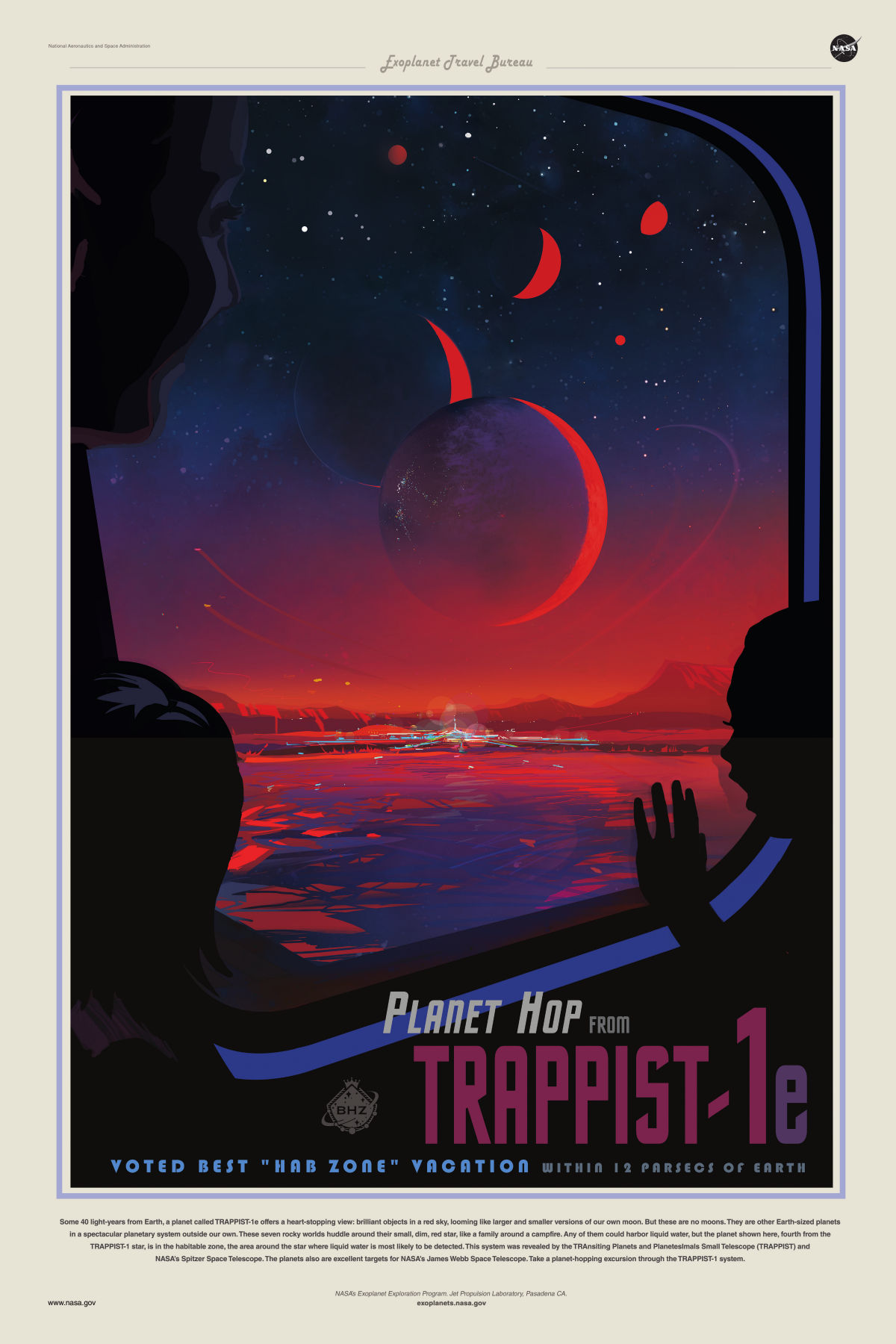Space Tourism
Expoplanet 55 Cancri-e (credit: JPL/NASA)
There seems to be a great deal of interest in 'space tourism' with pricey junkets on huge rockets and visits to space stations. Why not consider a really 'out of this world' travel opportunity? The Jet Propulsion Laboratory in Pasadena and NASA have some suggestions.
The space Agency believes that visiting a planet called Janssen, or 55 Cancri-e, covered by a global ocean of molten lava that exists under sparkling, silicate skies, offers a great travel opportunity. This lava world orbits the star Copernicus, only 41 light years distant. Unfortunately, its molten surface is uninhabitable, but you can glide safely above the liquid landscape, taking in the breathtaking views of a burning horizon. Janssen’s sister planet Galileo hangs in a jet black sky while curtains of silicate particles glitter as you cross the day-night rim to Janssen’s dark side.
If this seems a bit too exotic, you could consider Kepler 16b, a Star Wars planet not unlike Tatooine which also orbits a pair of stars. Kepler-16b is a gas giant, similar to Saturn, so it has no solid surface beneath the cloud tops. The travel poster suggests as it would appear from an imagined nearby moon. Prospects for life on this world aren't too good, as it has a temperature similar to that of frozen carbon dioxide, dry ice, of -109° F. However, the dual suns mean that the movie's iconic double-sunset is anything but science fiction.
Or perhaps an excursion to Trappist-1e may sound more interesting. Only 40 light-years off, TRAPPIST-1e offers great viewing options: brilliant objects in a red sky; like larger and smaller versions of Earth's moon. But these are not moons but other Earth-sized planets in a spectacular planetary system. Seven rocky worlds circle their small, dim red star. Some of them could have liquid water but TRAPPIST-1 sits in the habitable zone where liquid water is most likely to be found.


Kepler-16b (credit: JPL/NASA) Trappist-1e (credit: JPL/NASA)
What better spots for off-world travel excursions would one of these exoplanets represent? Book soon! WHB